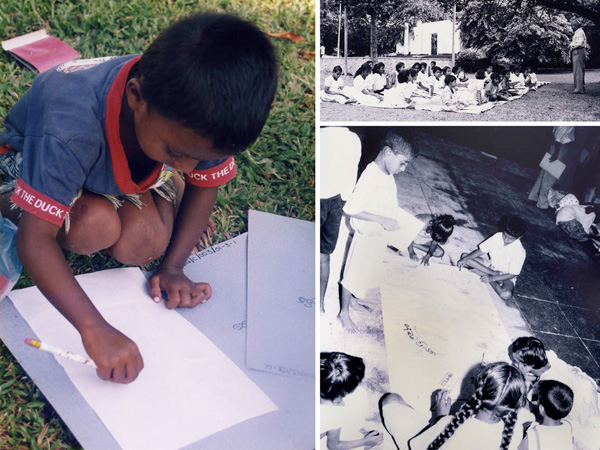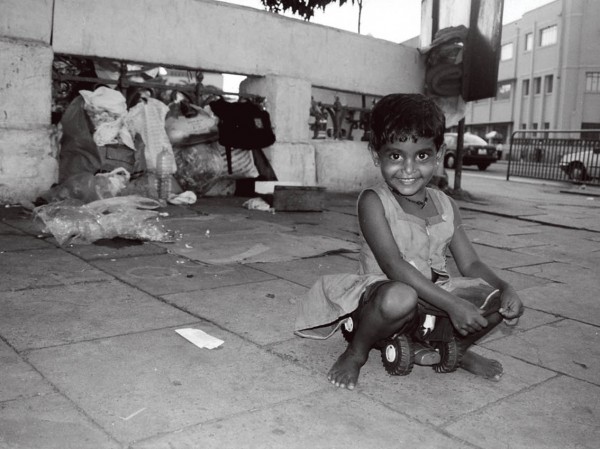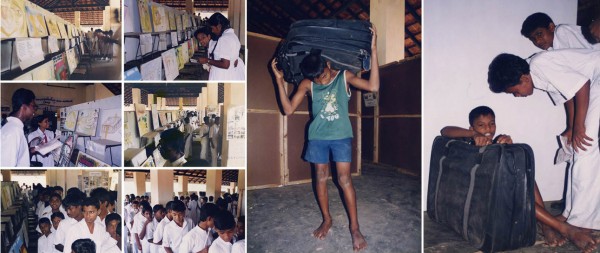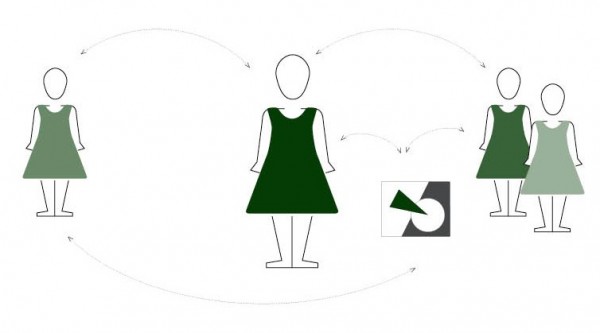Photos can tell better stories
This post is part of a series of personal reflections where I look back on past experiences to examine my perception of good design.
1999: Sri Lanka Interactive Media Group
What I was doing: My interest in visual communication had increased to the point where I decided to take it more seriously. I wasn’t sure what direction to head in so after a short course in photography at TAFE, I applied to study B Design (Visual Communication) at UTS and also registered to partake in volunteer work overseas with Australian Volunteers International (AVI). I got accepted into both so decided to defer university and took up a role with the Sri Lanka Interactive Media Group. I spent one year in Sri Lanka on a photography project with homeless children, advocating for child rights within the framework of the UN Charter on the Rights of the Child.
What I was experiencing: In the context of my work in Sri Lanka, visual communication played many roles. It was the language of research, the language of our practice and the language of the delivered outcome.
We began our project by an investigation of child rights issues. We explored the rights of children, as they were articulated through the UN Charter, and compared these to the reality for the homeless children that our organisation worked with. Having the capacity to capture the voices of the children we worked with was very important. Visual communication served two purposes here. For me personally, it bridged a language gap. When I first arrived in Sri Lanka I did not speak either of the two local languages, Sinhala and Tamil, and the children spoke broken English. Photography and other visual formats became a bridge that allowed me to connect with the local communities that we were partnering with. More importantly, visual communication acted as a form of art therapy through which the delicate subject of child rights abuse could be explored with the children.

The preliminary research pointed us towards running various education campaigns to broaden the community’s understanding of child rights. A co-design approach was adopted where the children impacted by the issues partnered with the practitioners in arriving at the final outcomes. Two examples best demonstrate this:
- I designed and implemented a photography project with the homeless children that we worked with. Again, within the framework of the UN Charter on the Rights of the Child, we set out to explore and contrast the children’s reality against the rights set out in the charter. The children decided to either stage images or use documentary style photography to depict their reality. We worked towards an exhibition of the children’s work and the design of a range of products, such as greeting cards, that promoted the message and raised much-needed funds for the organisation. The photographs carried the voices of the children to the broader community. Despite speaking the same language, there was a socially manifested communication barrier between the homeless children and the decision makers and affluent members of the community. The photographs served to bridge the communication gap here also. The exhibition brought the two groups together and became the site for new conversations that were then carried forward in various ways. I never kept any of the images that the children produced. Below is one of my photographs taken at the same time.

Siddhi, aged 4, is pictured here in front of her home, which she shares with 4 generations of women from her family.
- A second component of the organisation’s work delivered an education campaign targeting schools. We started the project by asking an artist to visually represent each of the articles within the UN charter. Then we asked the children to respond by depicting their own reality. The paintings were taken on a school tour around the country. They were part of a comprehensive program that included a lecture series, an exhibition of the paintings showing the contrast between legislated rights and the children’s reality and a staged simulation where the children impacted by the issues acted out their own realities.

Left two columns: students visiting the exhibition. Right two columns: A homeless child acting out impacts of child labour. The far right image shows the students engaging in a dialogue with the child labourer.
Upon completing the journey through the simulation, the students were ask to create their own response through drawing, writing or painting. The dialogue being generated in the community continued in this way, keeping the process iterative and ongoing.
My role as a visual communicator was ambiguous in my mind. I was at a road cross. I had come into this role as a social worker and had definite intentions of following this experience up with formal studies in visual communication. The fact that the project I was implementing was photographic in nature meant that I could no longer look at the medium as a passive tool. I was more deliberate about trying to identify what photography could contribute as oppose to other visual forms. I saw photography as the bridge that would connect the homeless children with the decision makers. There were also the practicalities – photography was something I felt I could teach the children. I had specific skills in this area and I had the ability to support the participants in producing images that could be exhibited.
Other design needs arose around the photography project. As mentioned, we created a range of greeting cards as a fund raising tool and also produced various printed publications. In each case we were responsive to the needs of the organisation and the community. In the case of the greeting cards for instance, we were conscious of the fact that the organisation was resource poor. They did however have a strong sense of support within the constituency that they served. Accordingly we decided to collaborate with the local community and together we hand made the cards from paper that we recycled by hand.
How I defined good design: There was a communication barrier between the children that we worked with and the decision makers that could impact their future. Good design, for me, was something that made their voices visible. It was something that enabled a connection between communities. I also felt that good design had to be very conscious of its context. It had to be sustainable in the sense that the project had to continue on without my input.
Whilst doing the project in Sri Lanka, I had a more deliberate collaborative approach to practice. I saw my role as a facilitator who brought together the contributions of the various stakeholders – including myself.

Main influencers: I mainly drew upon my experiences as a social worker to guide my practice. This was supplemented with knowledge I had gained through a short course in photography at TAFE prior to starting my role at the Sri Lanka Interactive Media Group. One of the volunteers in our group in Sri Lanka was a trained graphic designer. She worked with Motivation, a not for profit organisation that worked to enhance the lives of people with mobility disabilities. They designed and produced wheelchairs from locally sourced material. I got a lot of inspiration from her work and was encouraged to see the positive impact of their work on the community.
This entry was posted on Sunday, January 29th, 2012 at 10:29 pm. It is filed under Research Blog and tagged with Good design, Personal reflection, Social impact. You can follow any responses to this entry through the RSS 2.0 feed.
Leave a Reply